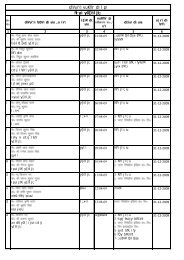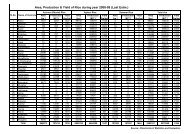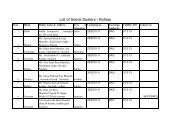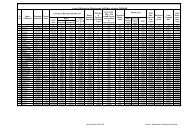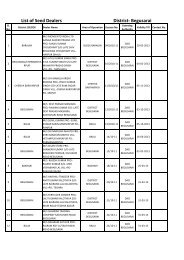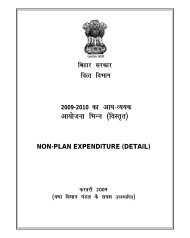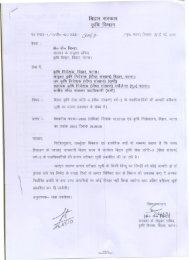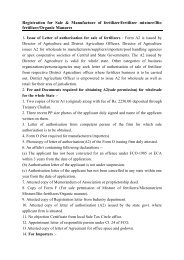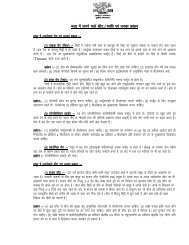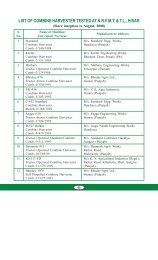chapter v cropping pattern, crop diversification and value addition
chapter v cropping pattern, crop diversification and value addition
chapter v cropping pattern, crop diversification and value addition
You also want an ePaper? Increase the reach of your titles
YUMPU automatically turns print PDFs into web optimized ePapers that Google loves.
Figure 5.1Leading Fruit <strong>and</strong> Vegetable Producing StatesTable 5.7: Targets of Production of Fruits in 2020 (Area in Lakh Ha, Production inLakh MT <strong>and</strong> Productivity in Quintal)ParticularsLitchiMango Banana GuavaMakhanaArea 0.38 1.60 0.48 0.30 0.50Production 5.00 30.00 24.00 4.5 3.00Productivity 13.16 18.75 50.00 15.00 6.00Notes: (i) Additional area will come from <strong>diversification</strong> of cereals particularly rice <strong>and</strong> wheat(ii) (projected rate of growth @10%).Source: Presentation by Agricultural Department, Government of Bihar before the SteeringGroup.5.2.5 Areas with Advantages in Vegetable ProductionThe areas on the periphery of the cities <strong>and</strong> towns can be profitably devoted tovegetable cultivation. For fully exploiting these opportunities, it is imperative to providethe necessary infrastructure of roads, communication <strong>and</strong> cold storage facilities. Theindicative targets for vegetable production are provided in Table 5.8.Table 5.8: Target of Production of Vegetables in 2020Particulars Cauliflower Brinjal Okra Potato Tomato TotalArea 0.70 0.65 0.65 1.50 0.55 4.05Production 14.00 16.25 11.05 30.00 13.75 85.05Productivity 20.00 25.00 17.00 20.00 25.00 21.00Note: Additional area will come from increase in <strong><strong>crop</strong>ping</strong> intensity due to increase in areaunder assured irrigation (projected rate of growth @6%).7



